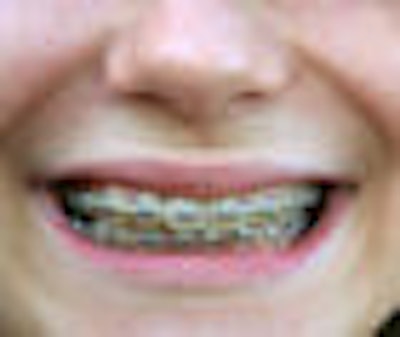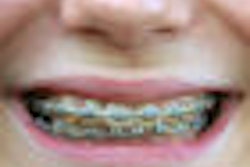
Ensuring patient compliance is tricky after any dental procedure, but it is especially difficult with patients who are starting long-term retainer use after their braces come off. Now a new study on patient compliance with orthodontic retainers has found that initial wear of vacuum-form retainers (VFRs), followed by a Hawley appliance one to two years into the retention phase, may yield the best results.
The study was presented at the recent American Association for Dental Research (AADR) meeting in Washington, DC, March 3-6.
Lack of research
This is the first study that has quantitatively evaluated retainer compliance at different amounts of time following treatment, study author Michael Pratt, D.M.D., a resident in the orthodontic department at the University of Kentucky College of Dentistry, told DrBicuspid.com. He conducted this research with G. Thomas Kluemper, D.M.D., the division chief and an associate professor at the school.
“Compliance decreases with VFRs at a much faster rate than with Hawley retainers.”
— Michael Pratt, D.M.D., University of
Kentucky
The study shows that average patient compliance decreases dramatically the longer a patient is out of treatment, and is abysmal at five years following treatment.
Before Dr. Pratt started a career in dentistry, he said he constantly heard people talk about how they quit wearing their retainers and had some form of relapse. He wanted to know what level of compliance to expect from his own patients, so he conducted a literature search.
"Surprisingly, I found that there is very little published on this topic," he told DrBicuspid.com. "So I decided to find out how compliant patients are with retainer wear and what factors affect that compliance."
Retention is a critical component of orthodontic treatment, yet there is limited research on practice protocols and/or patient compliance during retention, he noted in the study. This lack of information leaves the profession with a multitude of opinions and practice protocols.
Hawley versus vacuum-form
The study evaluated orthodontic retainer wear according to several variables, including patient age, gender, time in retention, and retainer type. The study authors wanted to identify predictors of compliance or reasons for noncompliance with removable orthodontic retainers.
The study authors mailed 1,085 surveys to patients who had finished full fixed appliance therapy in either the orthodontic graduate clinic or the orthodontic faculty practice at the University of Kentucky within the past six years. The sample population consisted of individuals of varying ages who were from both rural and urban environments with various socioeconomic backgrounds.
The authors received 279 (25.8%) responses to the surveys. Following analysis of these responses, Dr. Pratt and his colleagues found the following:
- Patient compliance was greater with vacuum-form retainers for the first two years following debonding.
- Compliance with VFRs decreased at a much faster rate than with Hawley retainers.
- Compliance was greater with Hawley retainers at any time longer than two years following debonding, and overall compliance was greater with Hawley retainers.
"For best short- and long-term retention compliance, initial retainer wear of a VFR, followed by a Hawley appliance one to two years into the retention phase, is recommended," the authors concluded.
The study finding that patients are initially more complaint with VFRs has been shown in previous studies as well, Dr. Pratt noted. However, no previous studies evaluated retainer compliance longer than six months following debonding.
"This study found that compliance decreases with VFRs at a much faster rate than with Hawley retainers," he noted. "Because of this, overall compliance was greater with Hawley retainers."
Long-term compliance
Robert Bray, D.D.S., president of the American Association of Orthodontists, said he believes this study is useful because it looks at long-term compliance.
"Typically, after about a year, we don't see a patient as much, so it is hard to track patient compliance with retainers," he said.
Dr. Bray agreed that initially patients tend to be more complaint with VFRs because clear retainers are a relief after orthodontic treatment. However, the key to patient compliance is instruction, he emphasized. Patients need to understand why they have to wear the retainers, and it is important to explain that well.
Dr. Pratt noted that lately it seems -- anecdotally at least -- that there is a shift away from Hawley retainers and toward VFRs for removable retention.
"This study suggests that perhaps this shift should be rethought," he said. "Also, the low rates of patient compliance several years following debonding suggests that permanent retention may be the way to go if there are concerns about relapse in a given case."
Dr. Bray agreed that there has been a shift toward the VFRs. He himself uses VFRs a greater percentage of the time, and that is why the study finding that long-term compliance was better with Hawley was particularly interesting to him.
Low rate of return
Jonathan Sandy, B.D.S., F.D.S., M.Orth., of the division of child dental health at the University of Bristol in the U.K., who has also done research (European Journal of Orthodontics, August 2007, Vol. 29:4, pp. 372-378) on this topic, noted that while the study is interesting, the return rate on the surveys means that this would be a weak basis to conclude what they have done.
"You need a 70% return on any questionnaire to have some idea of how people really feel about an issue," Dr. Sandy said. More work is needed in designing these kinds of questionnaires, and more research is needed on this topic, he said.
Other experts were more enthusiastic about the study findings.
Manish Valiathan, D.D.S., an assistant professor at the Case Western Reserve University School of Dental Medicine, agreed that compliance among orthodontic patients is a major determinant of successful care, and that this holds true during the retention stage of treatment as well. He said he found the study to be well designed and executed.
"The sample, response rate, statistical approaches, and conclusions are well described and commendable," he said.
The study has been accepted for publication by the American Journal of Orthodontics and Dentofacial Orthopedics, Dr. Pratt said.
Copyright © 2010 DrBicuspid.com



















